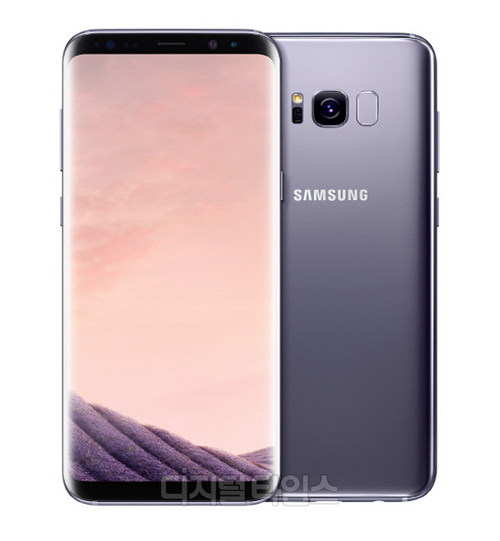‘Giga class’ Galaxy S8, Actual speed in half degree…. Network support to be available in the second half of the year
Na Won Jae | nwj@ | 2017-04-04 09:32:15

The Samsung Galaxy S8, which is planned to be released on April 21, is equipped with a communication technology that supports a communication speed of 1 gigabit per second (1Gbps) and enables to download 1 gigabyte (GB) of movies in 8 seconds. However, even if the actual Galaxy S8 is used, it is difficult to expect this speed in the Korean mobile service environment as Korean mobile carriers are not yet equipped with network facilities that support 1Gbps speed.
In fact, mobile carriers are able to support the maximum 600Mbps speed in the network environment of the mobile communication company, but it is only possible in the major cities such as the metropolitan area and the metropolitan city, and it is hard to exceed the speed of 300Mbps in the local small and medium cities. It is expected that the era of 1Gb mobile communication will be available after the second half of this year.
3 major mobile carriers are currently testing Samsung Galaxy S8 from Samsung Electronics in terms of usage speed in each network. In the meantime, mobile phone users are paying attention to the maximum communication speed of the actual Galaxy S8.
Galaxy S8 is equipped with ``Snapdragon 835`` which is the latest mobile application processor (AP) of Qualcomm and ``EXINUS 8995`` AP developed by Samsung Electronics. Each AP supports ``Carrier Aggregation`` (CA), which is a frequency bundling technology that allows users to transmit and receive data faster by utilizing multiple different mobile communication frequency bands as a single broadband frequency. While different frequency bands could be used as one frequency, the AP applied a technique (4-band CA. Category 16) that is able to use four frequency bands as one. For this reason, the Galaxy S8 can theoretically achieve 1Gbps speed.
Although domestic mobile carriers can support 4-band CAs, it is now difficult to speed up 1Gbps. At present, communication speed may vary depending on different regions.
Each mobile carrier currently has 3 to 4 frequency bands for the 4th generation (G) LTE, but it is not used as a nationwide network. The main frequency band is used as a national network, and the other frequency band is used as a secondary network. For instance, in metropolitan areas and metropolitan areas, where data use is high, the 4-band CA is supported by using both the main network and the supportive network in order to distribute the data traffic. However, in the case of middle and small cities, there is a relatively shortage of available supportive networks.
Mobile carrier representative said, ‘Although the Galaxy S8 can support 4-band CA as soon as it launches, it will not be able to experience a 4-band CA right now in small and medium-sized regions where there is not a lot of supportive networks.’
SK Telecom said it can support 4-band CA by bundling 4 bands out of five frequency bands including 800MHz, 1.8GHz, 2.1GHz and 2.6GHz that are in LTE band. The company supports the download speed of up to 500Mbps by applying 256 QAM, which is a base station technology that increases the communication speed by 33% with the existing 3-band CA. However, if the 4-band CA is applied to it, the download speed can be up to 600Mbps .
KT also supports 4-band CA by bundling four bands including 900㎒ and 1.8㎓ (1 broadband, 1 narrowband) and 2.1㎓. through combining 256-chip technology with a 3-band CA. The company can achieve up to 300Mbps in the existing network and up to 500Mbps with 4-band CAs.
LG U Plus has three frequency bands of 800MHz, 2.1GHz and 2.6GHz in LTE frequency band, and it is difficult to apply 4-band CA technology immediately. CA, on the other hand, can speed up communication. Also, each of the mobile carriers has commercialized ``4X4 MIMO`` technology that can increase the LTE speed by installing antenna in 4-band CA for both handsets and base stations (existing two to four). However it will take some time to apply ``4X4 MIMO``.
By Na Won Jae nwj@
